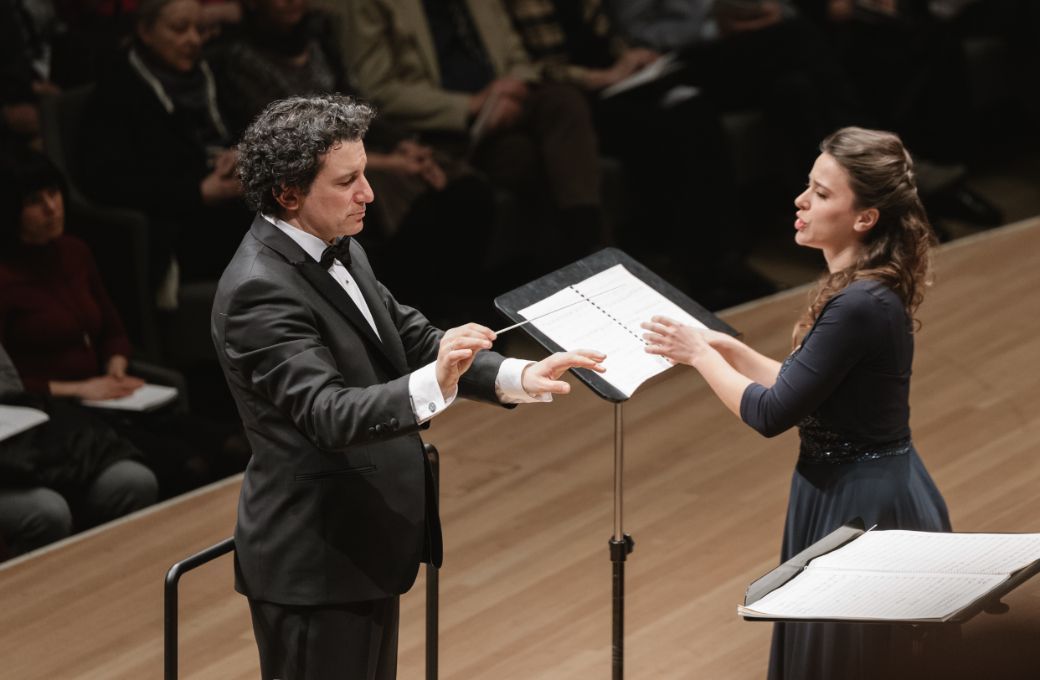“The symphony is not dead. Long live the symphony!” Henri Dutilleux might well have said, after facing the opprobrium of the French avant-garde in the 1950s for daring to venture that there was still life in the symphonic form. What he created in his Second Symphony, intriguingly subtitled “Le Double”, is to some extent backward-looking, yet with a strikingly original twist. The work, which the composer himself called “a musical play of mirrors and contrasting colours”, features an inner semi-circle of 12 players who not only ghost the much larger orchestral forces behind them; they repeatedly superimpose themselves upon the larger mass. The resulting polytonality, layering of textures and jazz-like punctuations are a far remove from the model of a Baroque concerto grosso, whereas the constant back-and-forth interactions are not.

In this performance by the Frankfurt Radio Symphony, of which Alain Altinoglu has been Chief Conductor since 2021, the playing was crisp, with a light and deft touch applied to the rhythmically complex structures, allowing the celesta to be clearly audible, even if the harpsichord hardly made its mark. I particularly enjoyed the Andante sostenuto middle movement where the delicacy of the melodic lines, and a thrusting trumpet solo set against seething strings plus assertive timpani, provided ample evidence of Dutilleux’s ear for colour and refinement. Though the influence of Stravinsky was always there in the background, the energy-driven inflections in the Allegro fuocoso of the Finale carried unmistakable echoes of Bernstein. There are few symphonic structures in which all the earlier vigour drains away quite so effectively, leaving the music to evaporate at the end into thin air. Was it all but a dream?
Debussy and the poet Paul Verlaine were both inspired by subtlety and nuance. The six poems that make up the song cycle Ariettes oubliées were not orchestrated by Debussy himself. Instead, these “forgotten songs” were brought to life in 2015 in a version prepared by Brett Dean. Their multi-faceted pastel shadings provided a splendid foil for the young French mezzo-soprano Ambroisine Bré. Hers was a fresh-toned voice, with a remarkable evenness of line and creamy top notes, easily traversing the wide tessitura. It was easy to see why she has already distinguished herself in several Mozartian roles. She preserved the conversational tone of intimacy and the mood of Stoic resignation at the loss of love, excelling in the scampering élan vital of the repeated “Tournez” in the fourth song, Chevaux de bois.
With his French background, I had half-expected Altinoglu to reveal much of the sensuousness which lies at the heart of Rimsky-Korsakov’s magical Scheherezade. The storytelling needs to have plenty of seductive allure in order to conjure up the perfumed opulence and Eastern colour. That was present more in the stylish contributions of Ulrich Joachim Edelmann in the leader’s chair and the sparkling woodwind solos, most notably from the flute of Clara Andrada de la Calle. In these Arabian waters there was quite a wind blowing, with Altinoglu often pressing ahead in waves of urgency. He has a flair for making big theatrical gestures, giving a nod to his wide operatic experience, but there were also welcome moments of delicacy and detail, not least in the prominence given to the harp in The Story of the Kalendar Prince. However, earthiness and robustness were more to the fore, with the score sounding suspiciously like Khachaturian in the Finale. This was a Scheherezade on speed skates. There was a degree of edginess in the playing which indicated to me that this partnership of conductor and players has yet to settle down rather more persuasively.


